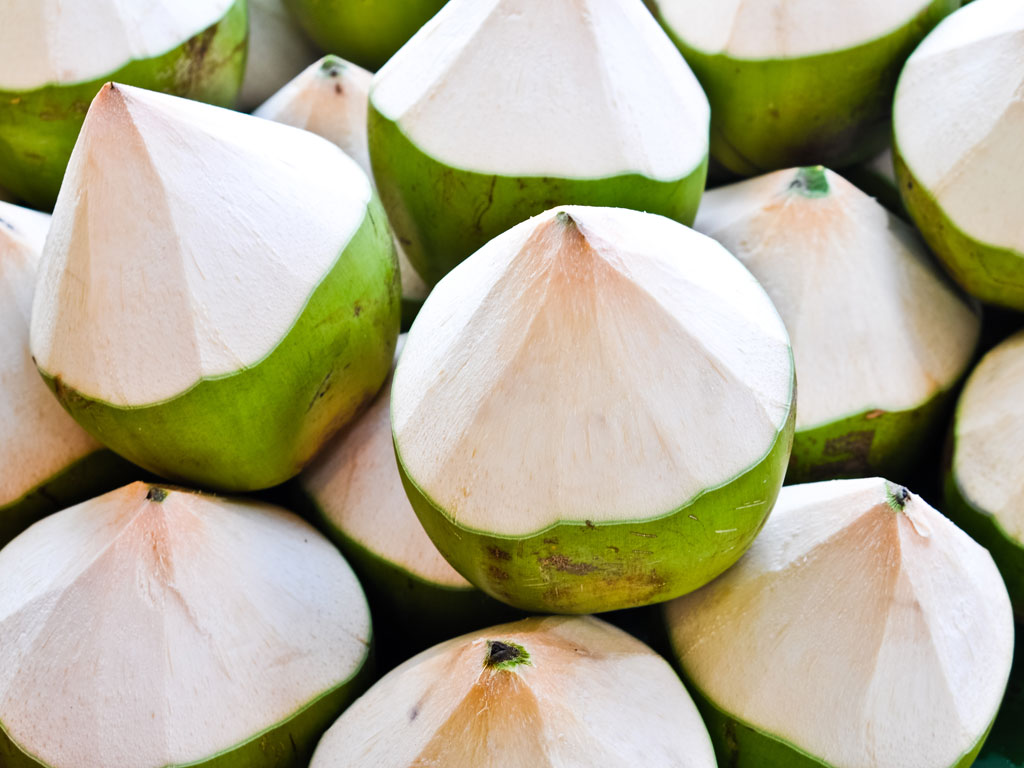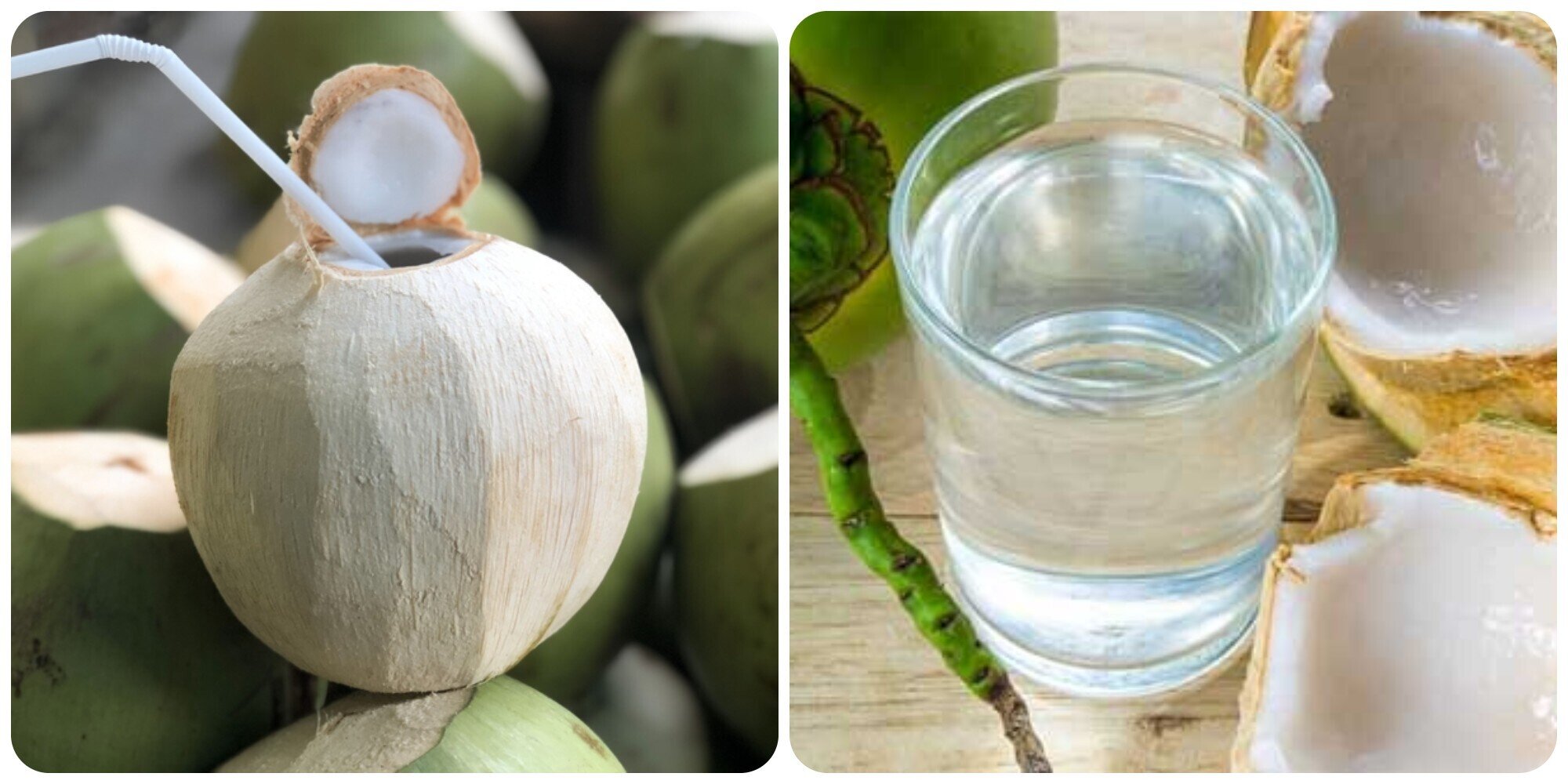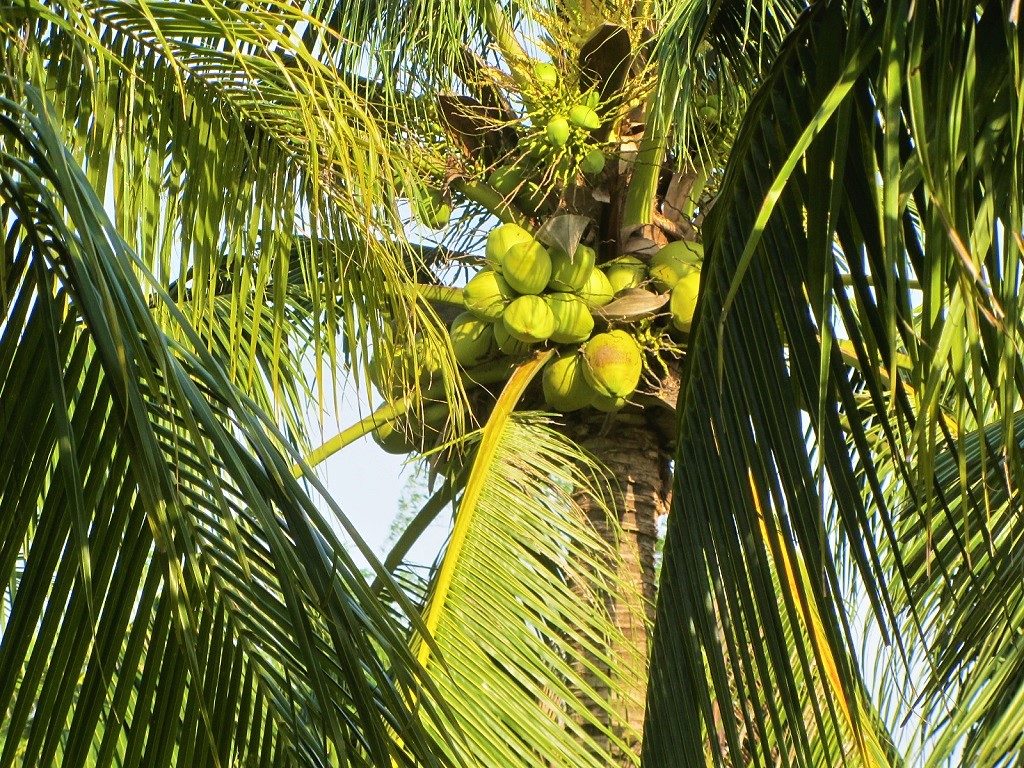Vietnamese coconut water is more than a beverage; it is a gateway to a tropical oasis that nourishes the body and supports local communities.
When you venture into this tropical haven, savoring diverse Vietnamese drinks is a must, especially the fruity delights. Among them, Vietnamese coconut juice stands out with its invigorating flavor, with each sip unveiling the landscape’s verdant palms and crafting an unforgettable chapter in your exploration of Vietnam’s dynamic culinary heritage.
1. Popular types of Vietnamese coconuts for extracting fresh water

In Vietnam, coconut varieties are grown for their diversity in colors, sizes, and shapes. For the use of coconuts in the refreshing Vietnamese coconut water, there are some popular types:
- Green Siamese Coconut
Renowned as Vietnam’s go-to coconut for water, its delicate green husk cradles a sweet, transparent liquid. A single green Siamese coconut yields up to 350 milliliters of refreshing water.
- Dwarf Siamese Coconut
Dwarf Siamese coconut is unique in its lighter green hue and a thin shell packed with ample water. It often produces over a dozen coconuts per cluster, surpassing the green Siamese in yield.
- Red Siamese Coconut
As its name suggests, red Siamese coconut has a reddish-brown shell with a sweet water content of 7-7.5% of sugar.
- Blue Siamese Coconut
Regarded as the most delectable variety for drinking, the blue Siamese coconut boasts a remarkably thin, deep green shell and a high sweetness level (8-9% sugar).
- Fire Siamese Coconut
Aptly named for its captivating fiery hue of yellow-orange, this variety of coconut has slightly smaller fruit but generously yields an amount of 250 to 300 millimeters of sweetwater.
- Green Siamese Coconut with pink flesh
Even though this coconut type resembles the green Siamese on the outside, it will surprise you with the charming pink hue in its inner shell. Each green Siamese coconut with pink flesh has an average weight of 1.5-1.8 kilograms.
- Malaysian Coconut
This is a new coconut variety that is cultivated in certain western Vietnam locations. Despite its small size, the Malaysian coconut holds abundant sweet water comparable to the Siamese variety.
- Tam Quang Coconut
Originating from Tam Quang (Binh Dinh province), this coconut showcases a radiant yellow shell, boasting sweet water in generous volumes of 250-350 millimeters per fruit.
- Brown (red) elongated coconut
Despite its unconventional shape, brown elongated coconut offers an impressive yield of 250-300 fruits annually per tree.
- Green elongated coconut
Another preferred choice for drinking, this coconut features smaller fruit, green shells, and sweet water, offering a water volume of 100-150 milliliters per coconut.
2. Health benefits of Vietnamese coconut juice

Vietnamese coconut water is not only famous for its freshness but also hailed as “nature’s sports drink,” with many good health effects.
- Hydrate the body: Coconuts are rich in electrolytes like potassium, magnesium, and phosphorus, which are necessary to regulate the body’s fluid balance.
- Aid digestion: Coconut water is easy to drink and less likely to cause nausea or stomach discomfort, making it suitable for supporting the improvement of constipation and acid reflux.
- Support recovery after prolonged exercise: Vietnamese coconut drink is an effective post-exercise rehydration option as it replenishes essential fluids and electrolytes.
- Maintain blood pressure and minimize stroke: Coconuts contain potassium and magnesium, which are minerals that help relax blood vessels and improve circulation.
- Protect healthy skin: With a good source of the antioxidant vitamin C, Vietnamese coconut juice is a great drink to protect the skin from damage.
- Reduce the added sugar intake: Unlike sugary drinks, unflavored Vietnamese water coconut typically contains minimal or no added sugar.
- Help weight loss: Vietnamese coconut water is notably lower in calorie content compared to drinks such as soda and juice, which makes it perfect for those who seek weight loss by reducing their calorie intake.
- Aid alcohol recovery: A cup of coconut water will help restore depleted electrolytes caused by alcohol consumption, serving as an excellent thirst-quenching solution and reducing alcohol-induced dizziness.
3. Where to buy Vietnamese coconut juice?

Coconuts flourish from the north to the south of Vietnam, especially along the coastal areas. Ben Tre Province is known as the country’s hub for coconuts and the Mekong Delta region’s largest coconut cultivation area.
Thanks to its popularity, tourists can enjoy genuine Vietnamese coconut juice in almost any province and city. A cup of coconut water typically costs about $1 only. Besides the traditional Vietnamese coconut water, tourists can also try creative combinations in Vietnamese coconut smoothies, Vietnamese coconut milk desserts, or Vietnamese coconut jelly drinks.
4. Important notes for drinking coconut water
As with any food or beverage, despite the fantastic health advantages Vietnamese coconut water provides, there are cautions to heed when enjoying this drink.
Don’t pair or consume these items with or after coconut water:
- Iced drinks
- Seafood
- Chocolate
- Medications
Furthermore, avoid consuming coconut water in the following circumstances:
- Directly after sun exposure
- Immediately post-exercise
- During the evening
- When you have a delicate constitution or are experiencing diarrhea
- In the first trimester of pregnancy

During your gastronomic discovery in Vietnam, be sure to savor more than just the delightful Vietnamese coconut juice. It is recommended to try other regional specialties like Vietnamese sugarcane juice, egg coffee, Vietnamese iced coffee, pennywort juice, Vietnamese avocado smoothie, Vietnamese tea and many more.
